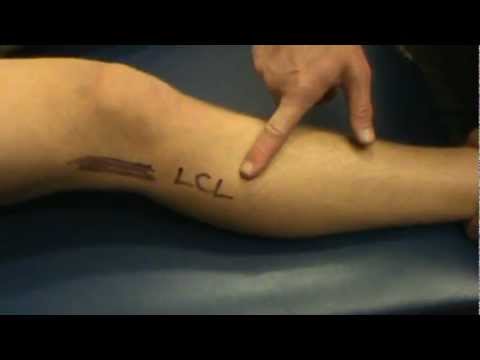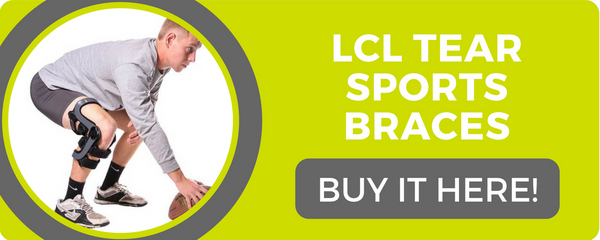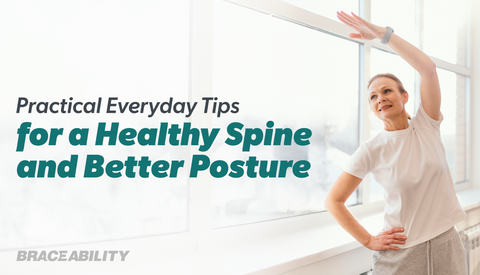LCL Tear | Torn Lateral Collateral Ligament in Your Knee
LCL Ligament (Lateral Collateral Ligament)
Before we further discuss what a LCL (Lateral Collateral Ligament or often times referred to as the Fibular Collateral Ligament) tear is, it important to understand more about the LCL ligament. The knee is one of the most complex joints in the human body and is absolutely vital to nearly all movements. There are four ligaments located within the knee that connect the lower leg bones to the femur (ACL, MCL, LCL and PCL). Where is your LCL? The LCL ligament is found on the outside of the knee and connects the femur to the smaller bone of the leg bone (fibula). The LCL along with the MCL are both collateral ligaments meaning they are found on the side of the knee. The LCL controls the side to side movement within the knee.
An LCL injury is very common in contact sports such as football and soccer. In this article, we will focus primarily on what an LCL tear is, but it’s important to keep in mind that there are many varying types of LCL injuries.
BraceAbility offers treatments for many knee injuries, including Knee Braces for LCL Tears

LCL Tear
Being that the LCL is located on the outside of the knee, often times when there is direct pressure or contact to the inside of the knee, which will cause a torn LCL. Rapid change of direction has also been known to cause LCL tears because the foot gets planted in an awkward position and the knee cannot compensate. In most cases, LCL tears occur in contact sports such as soccer or football. If you are an athlete and your lateral collateral ligament tears, it is not the end of the world. Recovery time from a torn LCL has been shown to be between 3-9 months.
LCL Tear Symptoms
Signs of a torn Lateral Collateral Ligament include:
- Knee gives away when standing or under stress
- Locking or catching sensation when knee is moved
- Numbness or weakness in the foot
- Pain along the outside of the knee (LCL pain)
- Stiffness
- Swelling and tenderness along the outside of the knee
Depending on the severity of the tear, LCL pain can be described from mild to severe.
Grades of LCL Tear
The severity of an LCL tear will most often be classified into one of three grades by the physician. Once the severity of the injury is determined, a proper treatment plan will be determined as well.
Grade 1
Small tears in the ligament. This grade of injury will produce some tenderness and minor pain.
Grade 2
Larger tears in the ligament but it is not completely torn. With this grade of injury, there will be noticeable looseness in the knee when moved. There will also be major pain, tenderness and swelling on the outside of the knee.
Grade 3
A grade 3 tear means that the LCL is completely torn. It is also very common to have damage to the surrounding ligaments with this severe of an injury. Once again, the injured knee will have major swelling, pain and tenderness along the outside of the knee. In this case, the entire knee will likely swell because of the severity of the injury.
LCL Tear Treatment
If you do suffer from a torn LCL, it is important to have proper treatment immediately after the injury to ensure it heals sufficiently. It the torn ligament does not heal correctly, it is almost certain that you will experience instability in the joint making your LCL, and knee much more susceptible to re-injury.
If you think that you may have a torn knee ligament, visit our Ligament Tears page to find the perfect brace for you.
If you do happen to tear your LCL or MCL, BraceAbility offers the perfect brace for you. The Functional Knee Brace is the ideal brace for anyone who suffers from any type of LCL injury, but specifically a torn LCL. This lateral collateral ligament knee brace can be worn as an alternative to surgery. It’s a functional knee brace meaning one can play sports and be active while wearing it.
This mode of treatment for LCL tears stands out above the rest due to its active thigh cuff that adjusts to changes in the muscles throughout its range of motion. Also, adding to the appeal of this hinged LCL knee brace is its low-profile, lightweight fit, which makes this brace picture-perfect for anyone who leads an active lifestyle.
This brace is perfect when recovering from football and soccer knee injuries. To check out our wide variety of sports knee braces, visit our football and soccer knee braces pages.
LCL Surgery for Torn Lateral Knee Ligament
More severe injuries (Grade 3) will often require surgery to replace the torn ligament. Surgery is also necessary if multiple ligaments are damaged during the injury and cannot heal concurrently.
LCL knee surgery is a process that usually takes anywhere from 1 to 2 hours. It can be longer if multiple ligaments need to be repaired at the same time. General anesthesia or a spinal anesthetic are the most common ways to allow to patient comfort during surgery.
If the lateral collateral ligament was torn where it attaches to the thighbone (femur) or shinbone (tibia), the surgeon will re-attach the ligament to the bone using large stitches or a metal bone staple. If the tear happened in the middle of the ligament, the surgeon will typically sew the torn ends together. If the damage was severe and cannot be repaired, your surgeon may reconstruct a tendon by using a graft taken from a tendon of your thigh muscles (quadriceps) or your hamstrings.
Unlike most ligament knee surgeries, LCL knee surgery is an open-knee procedure which means it is not done arthroscopically. The tendon graft is passed through bone tunnels and fixed to the thighbone and lower leg bone (fibula) using screws or posts or with stitches tied around a post.

LCL Repair and Recovery
Depending on the severity of the LCL injury, treatment will vary. With most Grade 1 and 2 injuries, conservative treatment will suffice. With these grade injuries, the ligament will likely heal itself if not torn completely.
LCL Recovery recommendations:
- Splinting/or using a brace
- Ice
- Elevation
- Taking pain medication
- Limiting movement of injured knee
- Physical therapy/ rehabilitation to strengthen and regain range of motion
Directly after the injury takes place, the physician may not be able to accurately assess the knee because of excessive swelling. If this is the case, they will recommend a light brace and ice until the swelling goes down. The perfect brace for this situation would be the Pneumatic Inflatable Knee Brace with Cold Therapy. This brace provides excellent compression and cold therapy simultaneously.
Risk Factors
People can choose what sports they take part in, but aging is not something one can avoid. Another uncontrollable risk factor for an LCL tear is one’s gender. Females are far more likely to tear the LCL ligament than males.
Men have greater ligament strength than women. In addition, women have less hip and knee flexion than males. This, along with the quadriceps/hamstring imbalance, equates to them having less neuromuscular coordination and control when landing a jump which can result in women more often landing in a compromising position.
Hormones also come into play in making women more prone to a partial tear of LCL or a complete tear of LCL. More relaxed estrogen receptors during menstruation can make one more prone to injury, as can the hormone relaxing that (you guessed it) relaxes or loosens the ligaments. This hormone is released when one is pregnant.











